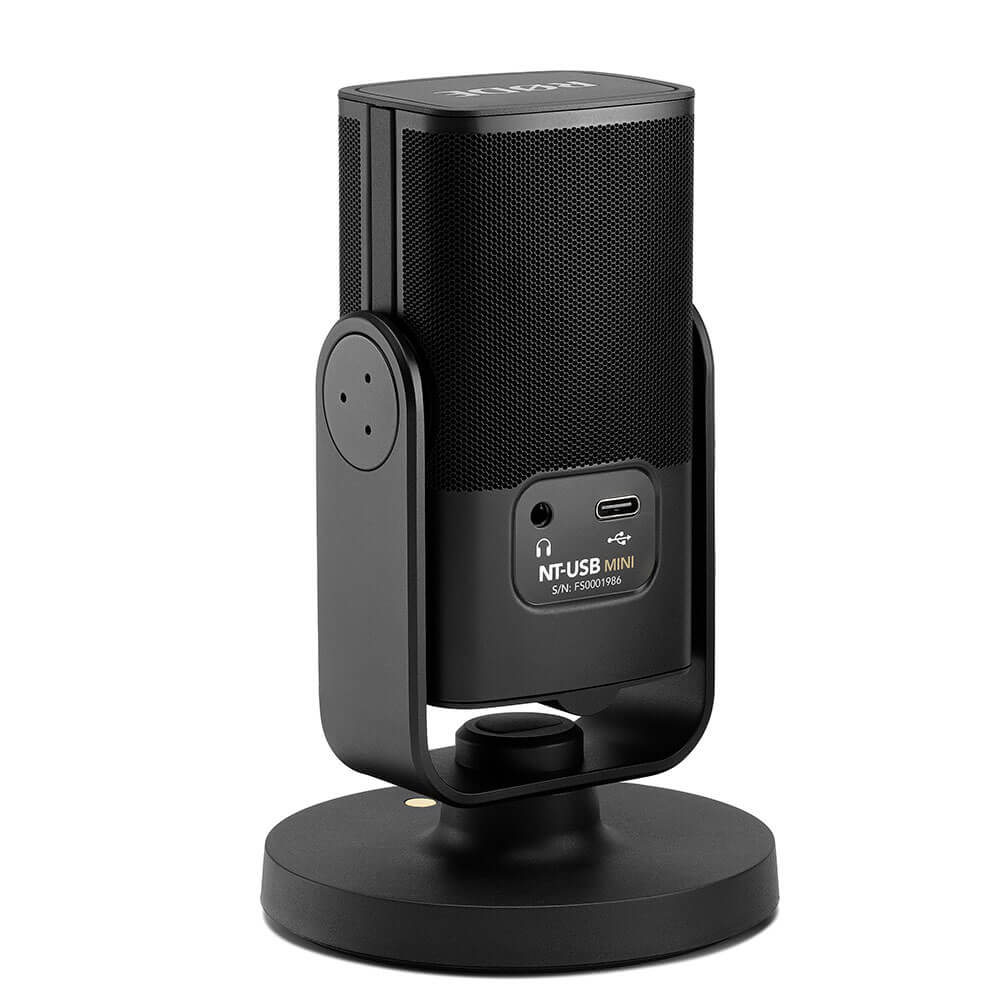We’ve been reviewing USB mics for over a decade — varying sizes, features, and price points. When a company like RODE, who has made their name with quality microphones for decades, has a new USB mic, it’s worth checking out.
First off, the size — it’s quite petite. Amazingly, inside is a condenser capsule with an internal pop filter. On the back side are the USB and headphone connections while the front sports the headphone level control. It’s mounted on a yoke for angled placement when used on a desktop. The base of the unit is magnetic; we found this out very quickly. Our workstation’s desk is stainless steel, and it attached itself with a solid “CHONK” during our unboxing. It made for a very solid placement. The yoke comes with a rubber insert that mates to the base — remove it and there’s a threaded hole for attaching to a traditional mic stand.
So the idea of a magnetic base: awesome. So many times, items like this just skitter across a desk, especially if a cable is pulled, inevitably, ending up on the floor. We know not everyone has a metal desktop, but kudos to RODE for this lil design feature!
Now the input level is controlled from the source of the recording device. The font control is for the headphone monitoring level. It interfaced nicely with our DAW of choice, Studio One, and we were also able to connect it to our iPad easily with Apple’s camera adapter.

A lot of people dismiss USB mics, thinking that they’re meant for amateurs, but it’s not the case here. We used it like you would a normal condenser mic and started by doing an acoustic guitar tracking session. Aiming it at the area where the fretboard meets the body, this mic is HOT, we certainly had to tame it in a bit at the DAW side of things, but we got a great natural sound, with just a bit of air, no harshness — to be a bit nit-picky, it was a touch on the dark side, but minimal EQ and re-positioning cleaned that up in a snap. We had no issues with latency as well, the headphone out provided a perfect monitoring situation.
Switching it over to vocals, it behaved like a traditional condenser would. Again, it is slightly dark, but not annoyingly so; just a touch of EQ and it brightened up nicely. Using it as a desktop/voice over mic works nicely, but some users might prefer the flexibility to get it right onto a subject’s voice. Podcasters will likely eat this one up – it’s the perfect upgrade to any entry-level setup.
At the time of this review, we’re about two weeks into the Covid-19 “social distancing” situation, and a mic like this can do a lot of things on the content creator side, as performers have transitioned from live gigs to live streaming. Working as an instrument and vocal mic, as well as a live-streaming/broadcasting device, it’s got a lot of options for the performer who might need an all-in-one USB mic in situations like these. Considering the ultra-low price tag, it is in the great “bang for the buck” zone. The only downside is the included USB cable might be a bit short, but you’ve likely got a drawer of these around somewhere, anyway. Plug in and enjoy.
PROS:
Great sounding, simple, flexible applications.
CONS:
Could use a slightly longer USB Cable.
STREET PRICE:
$99
